Want to reach a wider audience for your product listings? The key is to diversify your sales channels. By adding more places for potential customers to buy your product, you stand to sell more—while avoiding putting all your eggs in one basket.
This is true even for Amazon sellers, who already leverage one of the largest ecommerce platforms in the world. A great place to expand your online reach is Shopify, an ecommerce platform that allows anyone to create their own online store.
Maintaining your own standalone ecommerce store for your brand is important: it’s an asset that you own, versus selling alongside many other business owners on a marketplace like Amazon. Both Amazon and Shopify offer unique benefits for ecommerce entrepreneurs—why not reap all of them at once?
Here’s another selling point for sales channel diversification: you can use your FBA inventory to fulfill your Shopify orders.
That’s right! Instead of worrying about storing and shipping items on your own or finding a third-party fulfillment center, you can use Amazon’s Multi-Channel Fulfillment (MCF) via FBA.
Not convinced yet? Let’s l go over why you should integrate Amazon FBA with Shopify, how to connect your accounts and start fulfilling your Shopify orders through Amazon, how much it costs to use Amazon MCF, and how syncing Shopify with FBA impacts customer experience.
Pros and cons of using FBA to store and ship your Shopify orders
Pros:
- Amazon will store your products for you so you don’t have to worry about using your home, leasing a warehouse space, or using another third-party fulfillment center.
- Amazon will pick, pack, and ship the orders for you.
- Amazon passes on its great shipping rates to its sellers—their rates are typically much more affordable than if you were to get a shipping label yourself.
- You don’t need to worry about purchasing shipping boxes, envelopes, packing tape, bubble wrap, etc.
- Amazon MCF allows you to scale faster so you can focus more on growing your ecommerce store.
- Besides storage fees, no recurring monthly costs are involved—you only pay a fulfillment fee when you receive an order.
- Your inventory will automatically be placed in different Amazon warehouses across the country, allowing for faster shipping speeds to your end customers.
Cons:
- Your orders may arrive in Amazon-branded packaging, which could cause confusion for your customers.
- If your inventory does not sell well and you have inventory left sitting in Amazon’s warehouses, you will pay more in monthly storage fees.
- You are responsible for your own customer service, since the orders are placed on your own ecommerce store.
- Multi-channel fulfillment will not fulfill international orders, unless they are media products such as books, music and movies.
- An Amazon Seller Central account is required to use multi-channel fulfillment.
How to connect your Shopify account to your Amazon seller account
Once you have your Amazon and Shopify accounts created, connecting the two is fairly simple, thanks to MWS keys. Let’s get into how to connect Shopify and Amazon, and how to configure your settings in Shopify.
Step 1
Use this link to sign into your Seller Central account.
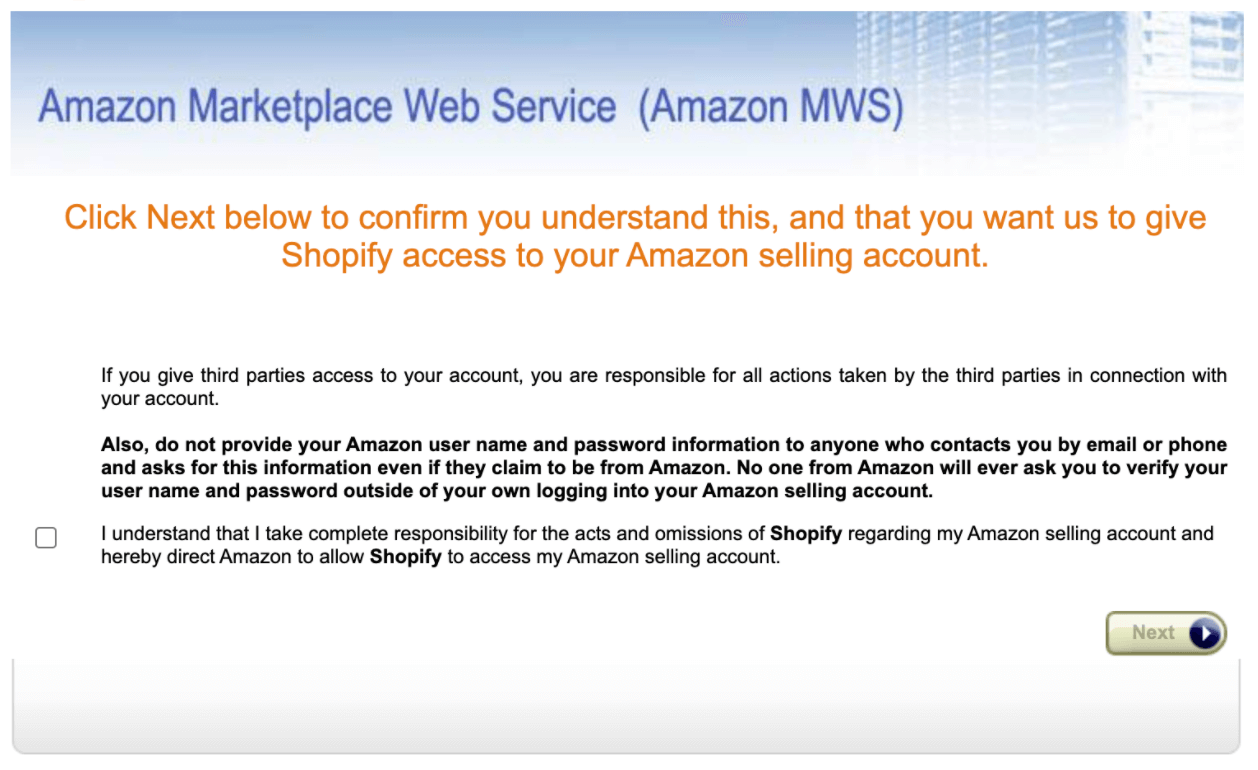
Step 2
Read the following terms and conditions, check the box, and click “Next”.

Click “Continue” and you’ll be brought back to Shopify to view your shipping settings.
Step 3
Your next step is to change your Shopify shipping settings to match Amazon’s shipping settings. This is a very important step—if the settings don’t match, your orders will not be fulfilled.
Amazon offers the following shipping rates:
- Standard Shipping
- Two-Day Shipping
- One-Day Shipping
In your Shopify shipping settings, go to the “Shipping” section and click on “Manage Rates.”

Before you get started changing settings, keep in mind that if you fulfill your Shopify orders through Amazon, you can only ship your products from within the U.S. You’ll need to make sure you delete any international shipping options shown in your shipping settings.
So to get started, delete all of the default shipping settings in your Shopify account— we are going to add in new settings to match those on Amazon.

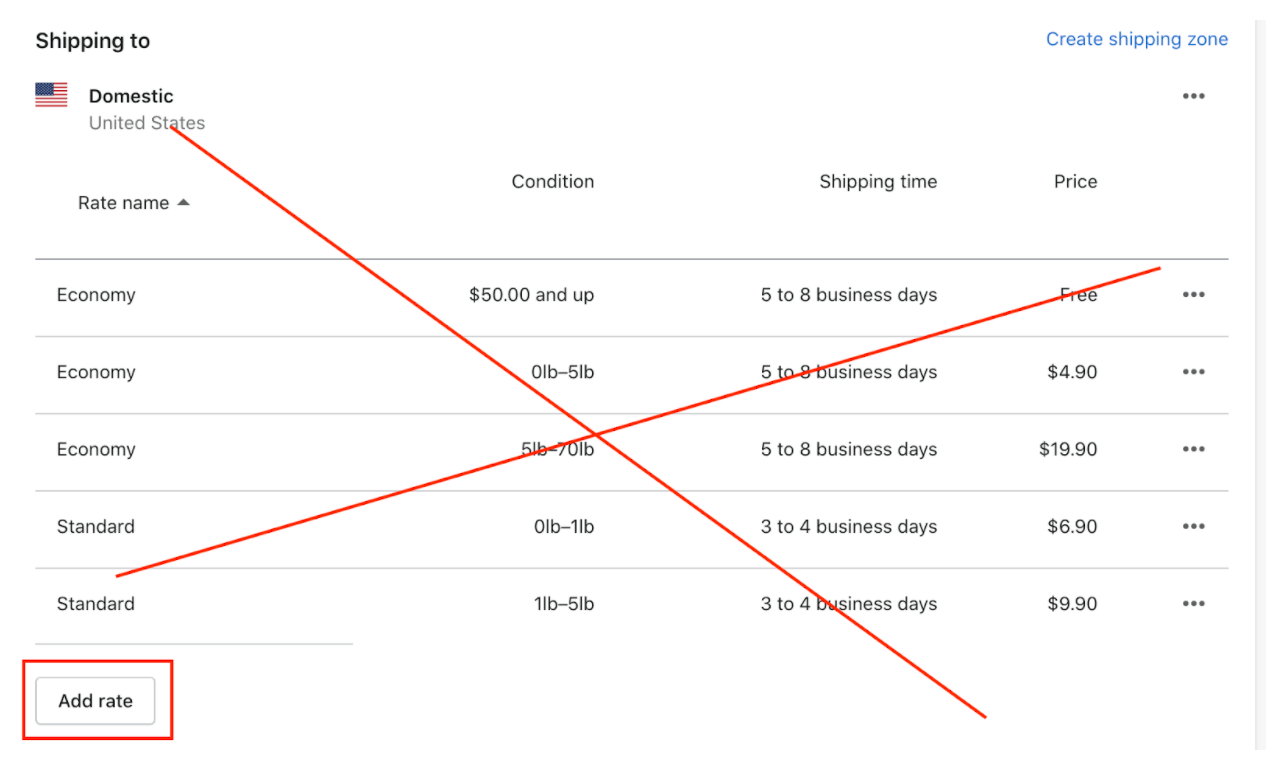
Once you’ve deleted all of the default shipping settings, click on “Add rate.”
Add the matching shipping rates, exactly as they appear on Amazon:
- Standard Shipping
- Two-Day Shipping
- One-Day Shipping
To determine how much to charge for each shipping rate, check out Amazon’s Fulfillment fees for Multi-Channel Fulfillment orders page.
These are the shipping rates I entered to match Amazon’s:
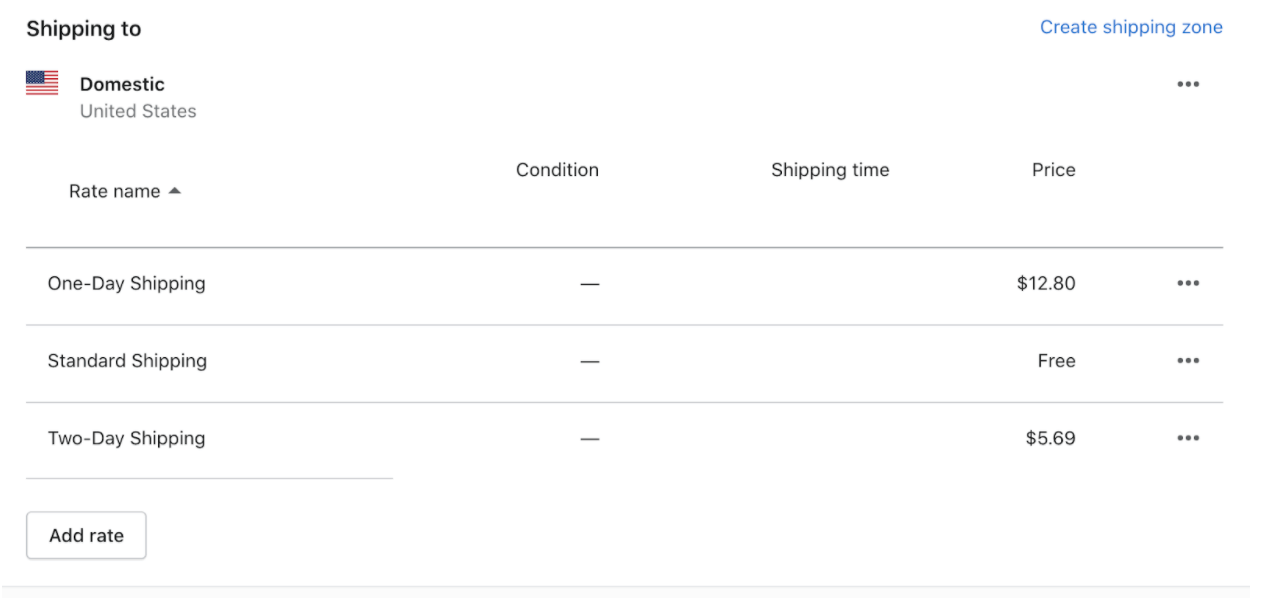
For this example, I chose to set Standard Shipping as free for the customer, but you can of course change that price to whatever you’d like. I set the one-day and two-day shipping costs to match Amazon’s fulfillment fees.
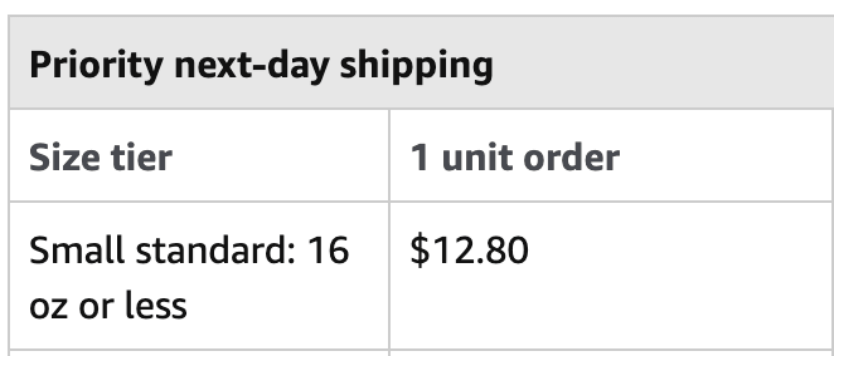
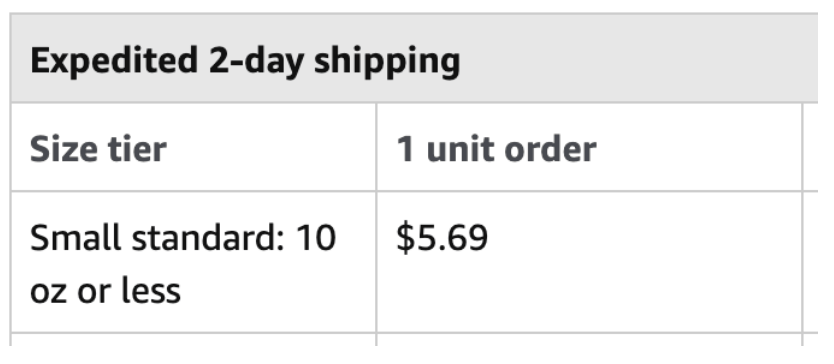
Once you’re done adding in your rates, scroll down to the bottom of the page and click “Save.”
As your customers are checking out on your Shopify store, they’ll choose from these three shipping options .
Step 4
Your next step is to configure your products for Fulfillment by Amazon. You can do this for new products as well as those you already list.
Add a new product
When you’re adding a new product in Shopify, scroll down the “Inventory” section on the “Add a Product” page.
Here you will see a drop down menu under “Inventory managed by.” Choose “Amazon Marketplace Web.”
You’ll then see a message underneath that reads “This product’s SKU must match the SKU used in Amazon Marketplace Web.” Matching the SKUs across the two marketplaces will ensure your Shopify listing is synced with your Amazon inventory.
Here’s how to do it:
In Seller Central, go to the “Inventory” tab > “Manage Inventory.”
Then copy the 10-digit number under the SKU section.
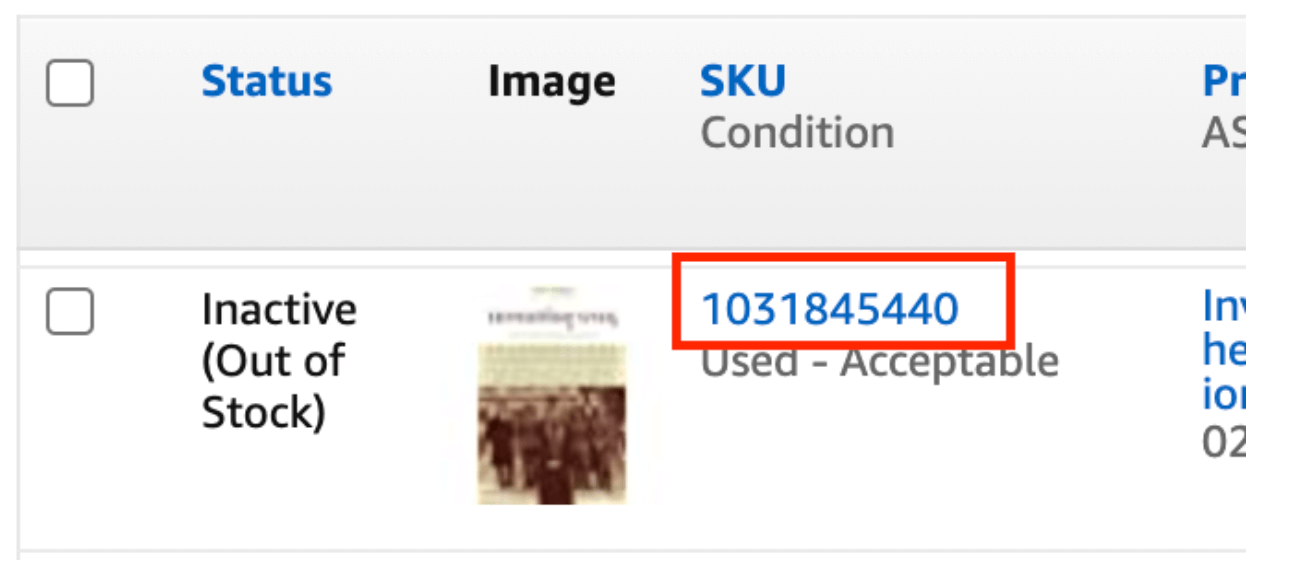
Paste that SKU into your Shopify “Inventory” section under “SKU (Stock Keeping Unit).”
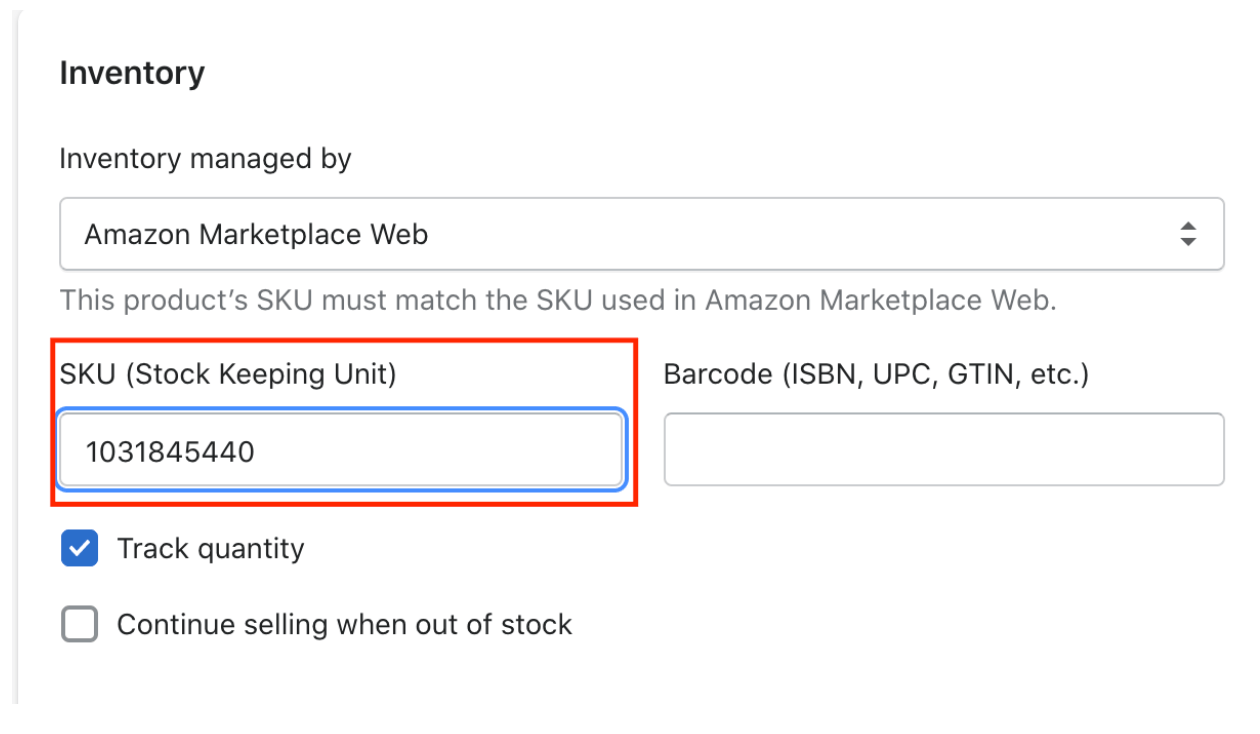
Be sure to leave the “Track quantity” box checked—that way you maintain correct inventory levels for your fulfillment.
Lastly, enter in the weight of your product. This also needs to match exactly as you entered it on Amazon.
You can find this number quickly. Locate your product in “Manage Inventory” on Seller Central, go to the “Estimated fee per unit sold” section, and click on the drop down menu button.
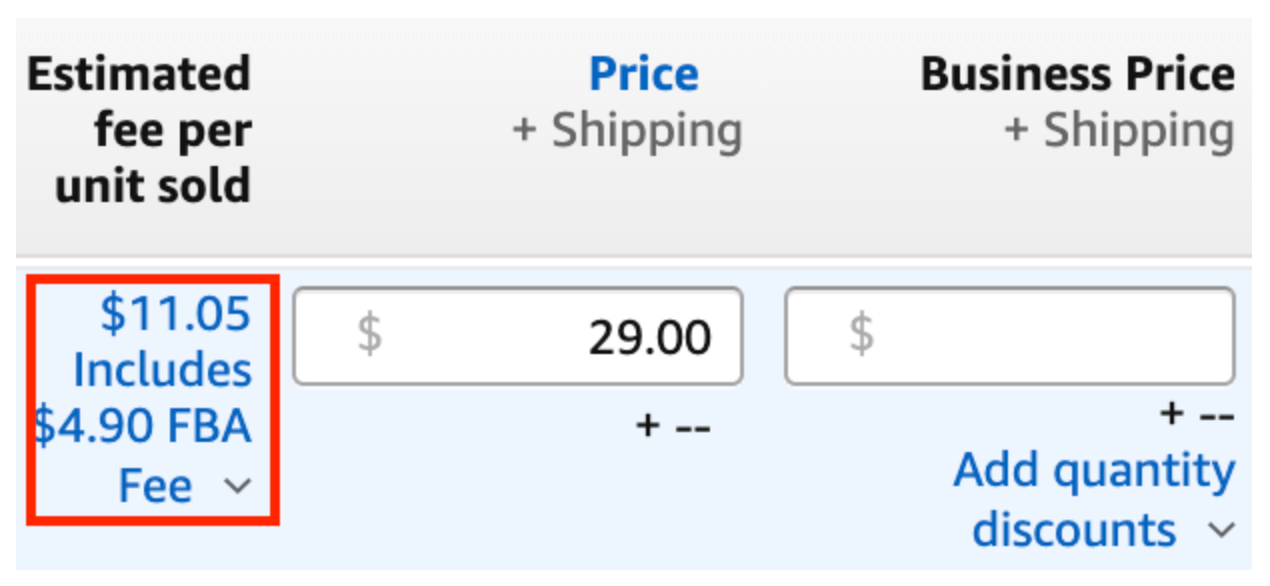
Scroll down and you will see “Go to Revenue Calculator.” Click that.
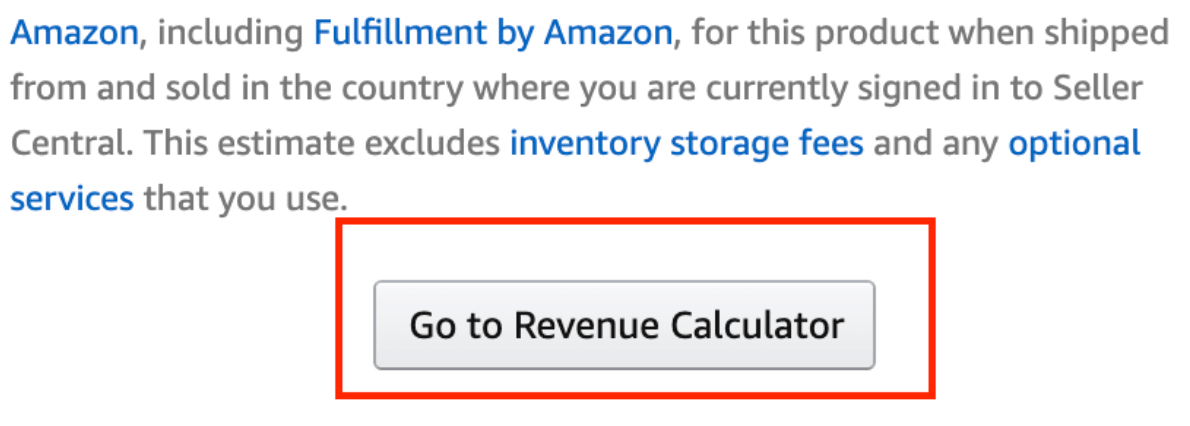
You’ll then be able to see what your item weighs.
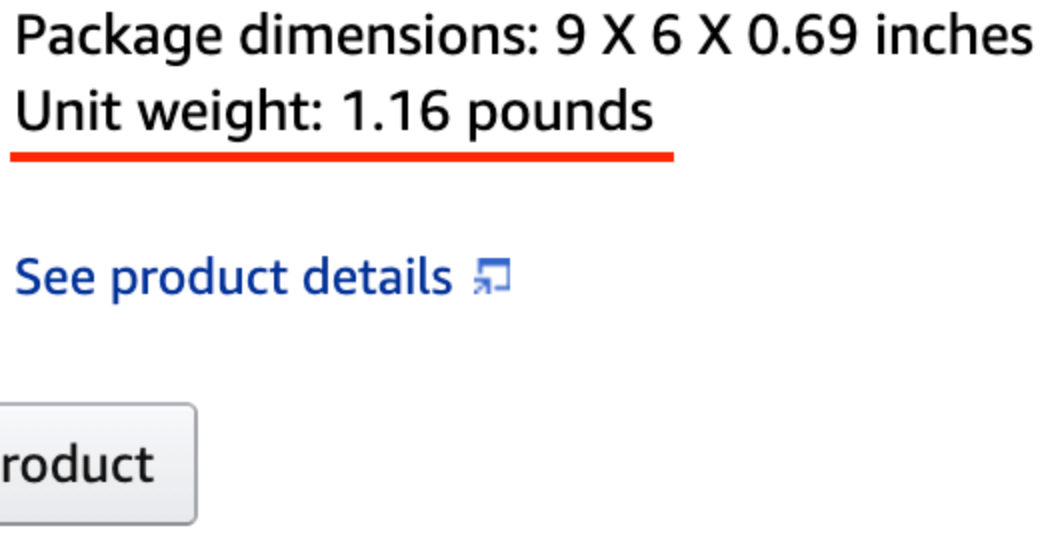
Enter that exact value into Shopify.
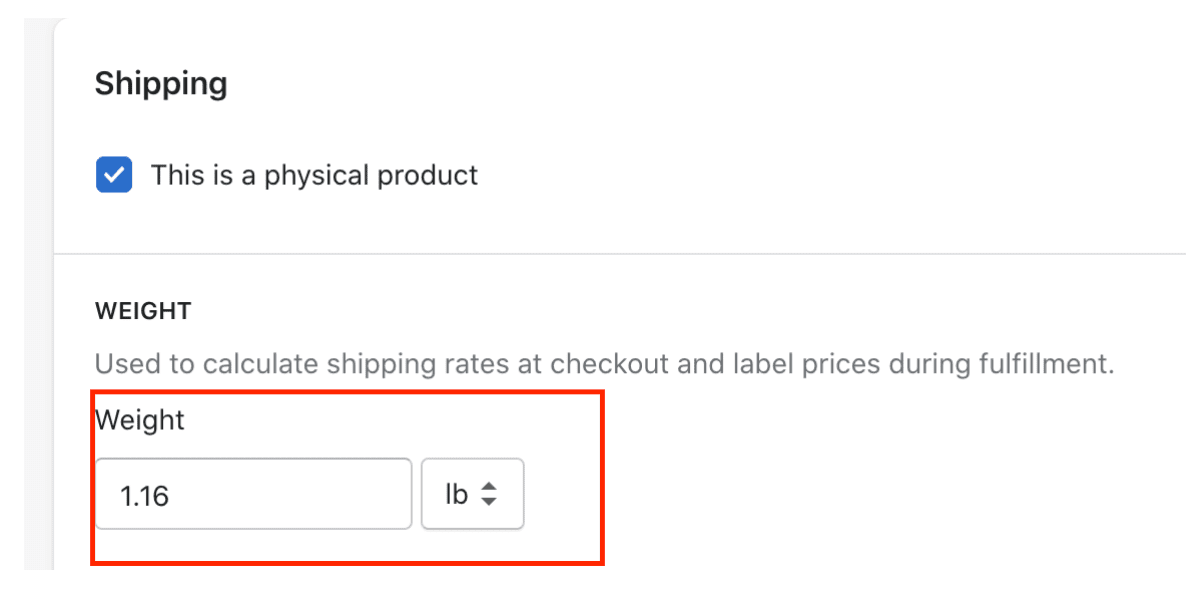
Now scroll down to the bottom and click “Save”.
Configure existing Shopify products for Fulfillment by Amazon
Step 1: From your Shopify admin menu, go to Products > All products.
Step 2: Click the name of the product you want to enable fulfillment for.
Step 3: In the Shipping section, select “Amazon Marketplace Web” from the “Fulfillment service” drop-down menu.
Step 4: In the “Inventory” section, select “Amazon Marketplace Web tracks this variant’s inventory” from the “Inventory policy” drop-down menu.
Step 5: Double-check that the values you’ve entered for the weight and SKU fields exactly match what you’ve entered for the same product in Seller Central. On Amazon, the SKU is called Seller SKU or Merchant SKU (MSKU).
Step 6: When you’re done, click “Save.”
How to fulfill your orders in Shopify
Now that you’ve added your shipping settings and configured your Shopify products, how do you make sure your orders are being fulfilled?
Amazon will automatically sync your orders with Shopify on an hourly basis, but you’ll still need to manually request in Shopify that Amazon fulfill your orders.
There are paid Shopify apps you can install to automate this process, but if you’re just starting out your Shopify store and want to save some money, manual order fulfillment is the way to go.
Let’s go over how to do it.
Step 1: From your Shopify admin, go to “Orders”.
Step 2: From the “Orders” page, click the order number.
Step 3: In the “Order Details” section, click “Start fulfilling” to open the order’s Fulfillment page. By default, every line item is set to be fulfilled, but you can fulfill part of an order if you want.
Step 4: You’ll be able to see which shipping speed the customer chose. Apply their preferred shipping method (standard, expedited, priority.)
Step 5: Select “Mark as fulfilled”.
Step 6: Click “Fulfill items” to mark the order as fulfilled.
After you mark the order as fulfilled, it’s easy to check its status. In your “Orders” section, you should see that the order is marked as “Pending Fulfillment”. Once it is accepted by Amazon, the status will change to “Fulfilled”.
You can also see the order in your Seller Central account. The sales channel will be displayed as “Non-Amazon”.
And now your orders will be fulfilled by Amazon!
Once you start receiving lots of Shopify orders, you may want to opt for a third-party app to automate this process.
In Shopify, go to “Apps” in the menu bar.
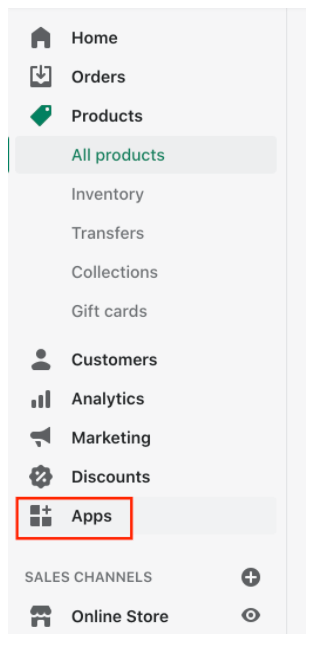
Then click “Visit the Shopify App Store”.

In the App Store, search for “Amazon Fulfillment”. You’ll see a ton of results for apps that automate the Shopify-to-Amazon order fulfillment process.
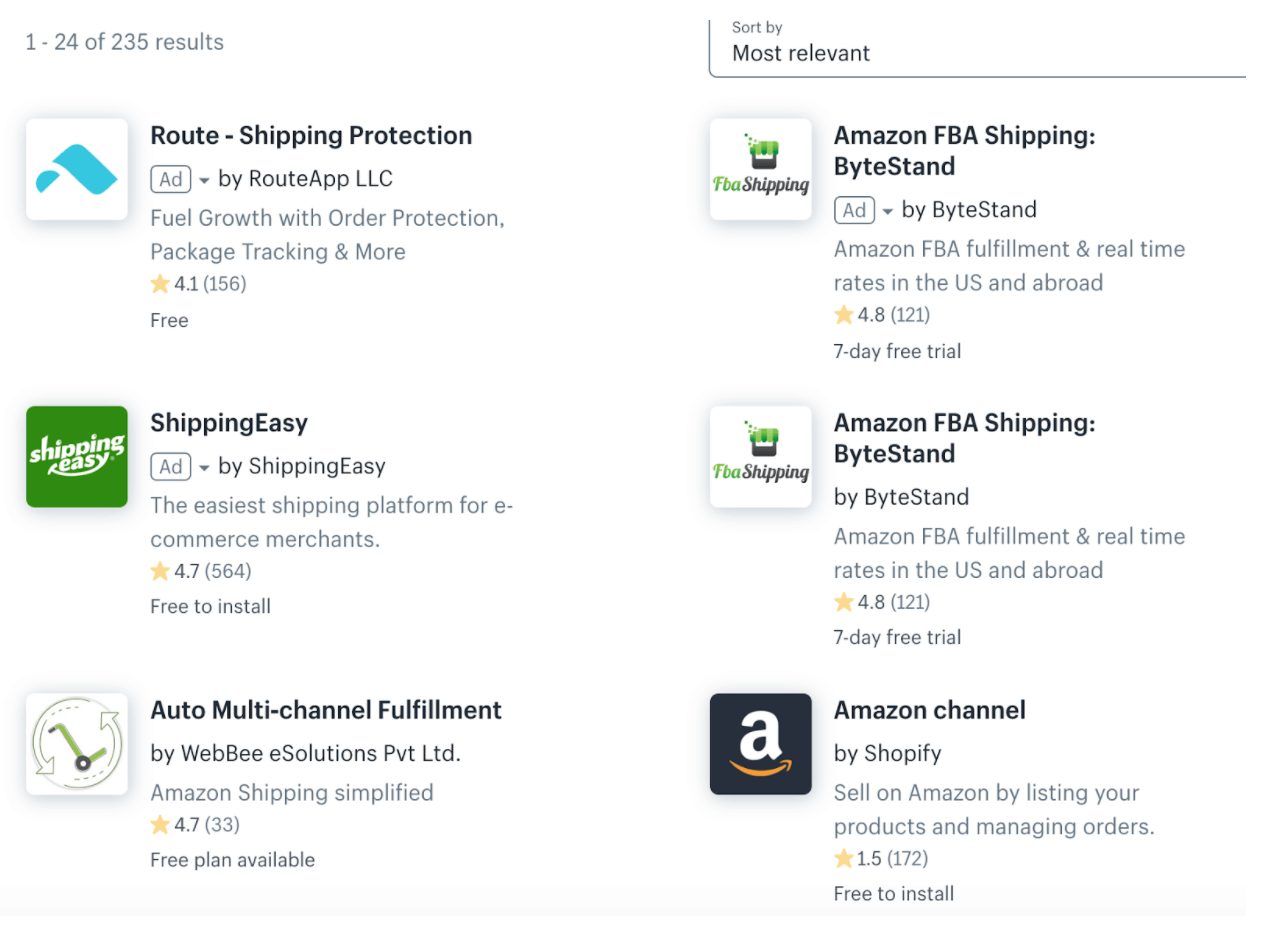
Many offer free trials, so feel free to test out some and see which works best for you.
How much does it cost to use Amazon Multi-Channel Fulfillment?
Since you are utilizing Amazon’s Fulfillment Network to store and ship your Shopify orders, you’ll still need to pay Amazon’s monthly storage fees.
| Month | Standard-size | Oversize |
| January – September | $0.75 per cubic foot | $0.48 per cubic foot |
| October – December | $2.40 per cubic foot | $1.20 per cubic foot |
On top of that, you will need to pay the fulfillment fee that includes picking, packing and shipping your items.
As we went over earlier, the fulfillment fees will be based on the shipping speed your customer chooses, as well as the size tier your item falls under. Of course, you can pass that cost onto your Shopify customer by charging more for shipping.
Here is the breakdown of the fulfillment fees you will need to pay per unit shipped, based on shipping speed.
| Standard 3-5 business day shipping | |||||
| Size tier | 1 unit order | 2 unit order | 3 unit order | 4 unit order | 5+ unit order |
| Small standard: 4 oz or less | $3.95 | $2.75 | $2.39 | $1.89 | $1.79 |
| Small standard: 4 to 10 oz | $4.95 | $3.45 | $2.95 | $2.29 | $1.99 |
| Small standard: 10 to 16 oz | $5.79 | $4.05 | $3.45 | $2.89 | $2.59 |
| Large standard: 10 oz or less | $5.49 | $3.85 | $3.29 | $2.69 | $2.39 |
| Large standard: 10 to 16 oz | $5.79 | $3.90 | $3.40 | $2.89 | $2.59 |
| Large standard: 1 to 2 lb | $5.95 | $3.95 | $3.45 | $3.35 | $2.95 |
| Large standard: 2 to 21 lb | $5.95 + $0.38/lb above first 2 lb | $3.95 + $0.38/lb above first 2 lb | $3.45 + $0.38/lb above first 2 lb | $3.35 + $0.38/lb above first 2 lb | $2.95 + $0.38/lb above first 2 lb |
| Small oversize | $10.99 + $0.38/lb above first 2 lb | $6.80 + $0.38/lb above first 2 lb | $5.80 + $0.38/lb above first 2 lb | $4.80 + $0.38/lb above first 2 lb | $3.80 + $0.38/lb above first 2 lb |
| Medium oversize | $15.30 + $0.39/lb above first 2 lb | ||||
| Large oversize | $78.30 + $0.80/lb above first 90 lb | ||||
| Special oversize | $143.30 + $0.92/lb above first 90 lb | ||||
| Expedited 2-day shipping | |||||
| Size tier | 1 unit order | 2 unit order | 3 unit order | 4 unit order | 5+ unit order |
| Small standard: 10 oz or less | $5.69 | $3.99 | $3.29 | $2.89 | $2.49 |
| Small standard: 10 to 16 oz | $5.89 | $4.19 | $3.49 | $3.09 | $2.69 |
| Large standard: 10 oz or less | $5.79 | $4.09 | $3.39 | $2.99 | $2.59 |
| Large standard: 10 to 16 oz | $6.29 | $4.59 | $3.89 | $3.49 | $3.09 |
| Large standard: 1 to 2 lb | $6.99 | $4.99 | $4.19 | $3.69 | $3.29 |
| Large standard: 2 to 21 lb | $6.99 + $0.38/lb above first 2 lb | $4.99 + $0.38/lb above first 2 lb | $4.19 + $0.38/lb above first 2 lb | $3.69 + $0.38/lb above first 2 lb | $3.29 + $0.38/lb above first 2 lb |
| Small oversize | $11.99 + $0.38/lb above first 2 lb | $7.80 + $0.38/lb above first 2 lb | $7.30 + $0.38/lb above first 2 lb | $7.15 + $0.38/lb above first 2 lb | $6.85 + $0.38/lb above first 2 lb |
| Medium oversize | $16.80 + $0.39/lb above first 2 lb | ||||
| Large oversize | $78.30 + $0.80/lb above first 90 lb | ||||
| Special oversize | $143.30 + $0.92/lb above first 90 lb | ||||
| Priority next-day shipping | |||||
| Size tier | 1 unit order | 2 unit order | 3 unit order | 4 unit order | 5+ unit order |
| Small standard: 16 oz or less | $12.80 | $7.30 | $6.30 | $5.80 | $4.30 |
| Large standard: 16 oz or less | $13.80 | $7.80 | $6.80 | $5.90 | $4.80 |
| Large standard: 1 to 2 lb | $13.85 | $7.85 | $6.85 | $5.95 | $4.85 |
| Large standard: 2 to 21 lb | $13.85 + $0.39/lb above first 2 lb | $7.85 + $0.39/lb above first 2 lb | $6.85 + $0.39/lb above first 2 lb | $5.95 + $0.39/lb above first 2 lb | $4.85 + $0.39/lb above first 2 lb |
| Small oversize | $20.80 + $0.39/lb above first 2 lb | $11.30 + $0.39/lb above first 2 lb | $8.20 + $0.39/lb above first 2 lb | $7.70 + $0.39/lb above first 2 lb | $7.30 + $0.39/lb above first 2 lb |
| Medium oversize | $31.30 + $0.39/lb above first 2 lb | ||||
| Large oversize | $78.30 + $0.80/lb above first 90 lb | ||||
| Special oversize | $143.30 + $0.92/lb above first 90 lb | ||||
The fulfillment fees are slightly higher than if your order was placed on Amazon.com but you will not be paying Amazon a referral fee for each item sold, which is typically 15%.
How will switching to Amazon fulfillment impact customer experience?
With fulfillment by Amazon, customer experience will likely improve due to Amazon’s fast and accurate shipping capabilities. Even with standard shipping, your customer will receive their order within 3-5 business days.
A potential issue lies with the fact that Amazon may ship out your orders in Amazon-branded packaging. If you have a customer that does not support Amazon, they may not be happy about receiving such a package.
This may also confuse customers, since they ordered your product from Shopify, not Amazon.
Amazon says they’re actively working on enabling unbranded packaging for all MCF orders, although most orders will be shipped with Amazon-branded packaging. This is something to keep in mind if you do switch to Amazon fulfillment.
Enable Amazon Multi-Channel Fulfillment today!
Thanks to affordable fulfillment fees, a long list of benefits, and the availability of automation options, the decision to enable Amazon fulfillment for your Shopify orders is an easy one to make.
Have you integrated Amazon FBA with Shopify and seen improved sales? Let us know about your experience in the comments!
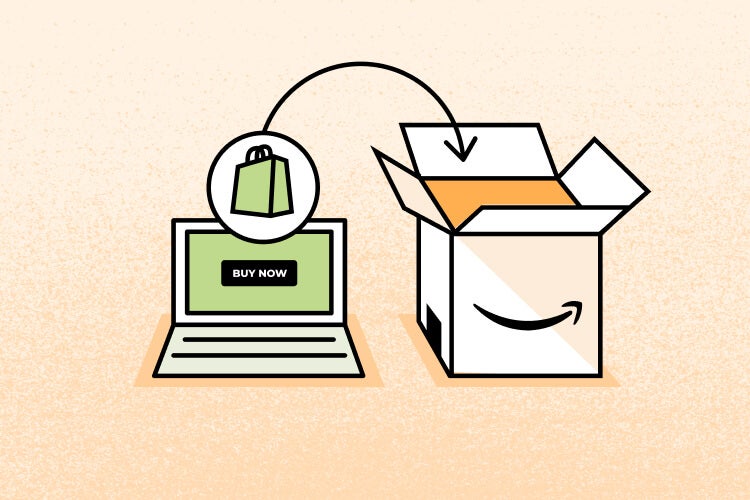

 19 Comments
19 Comments
19 comments on “How to Integrate Amazon FBA with Shopify”
I have my own website which is not a Shopify website which I want to use for drop shipping and I’m wondering if that can be linked to FBA similar to the Shopify example ?
What platform are you using for your ecommerce site?
I read this article and found it really interesting and useful. Thanks for sharing.
Hi Brian, great article thanks so much. Wondering which location I should set in Shopify when using FBA as a fullfilment channel? The FBA warehouse location which the bulk of my inventory is stored at?
Hi Laura, thanks for reading!
Yes, I believe that would be the best location to set in Shopify.
Hey Brian,
I’m an FBA seller, and I’m in the process of building a website hosted by GoDaddy. The plan was to sync my Amazon FBA listings to my website and use Amazon MCF to fulfill the orders for my website. Now I’m considering migrating my website over to Shopify and doing the same thing there. I read through your listing linking process above, and I was wondering if there is a way to sync the listings in bulk? I have thousands of FBA product listings, and individually adding the product weight and dimensions in Shopify to the listings would be very time consuming. Another question I have for you is can Shopify also push the listings out to other ecommerce platforms such as google shopping and walmart.com? I want all of my ecommerce platforms to sync to my Amazon FBA listings and use Amazon MCF for order fulfillment. The in stock quantity at Amazon will need to be synced to all platforms. Does Shopify have the functionality to do that? Thanks in advance!
Hi Dee,
I suggest going through Shopify’s app store to see if they have a program that can help with that. When syncing Shopify with Amazon, you should be able to sync them in bulk.
Hey Brian! Brilliant article. I am already using this for my business but I have a question for you: my Shopify customers receive a shipping confirmation from Amazon (with no mention about my Shopify store). Do you know if I can customize this?
Hi Camille,
Thanks for reading! That I am not sure of. I suggest contacting Shopify support with this question. They’re very helpful and should be able to set that up for you!
Brian
Is it possible to integrate multiple accounts: US and non-US marketplaces?
Hi Tina,
Yes, you can integrate other Amazon marketplaces as well
I have my own website which is not a Shopify website and I’m wondering if that can be linked to FBA similar to the Shopify example ?
Where is your website hosted?
Hello! Thank you for sharing this article. I have a question. I am planning to use MCF for my Shopify store. I am also selling on Amazon USA. I don’t want to use Amazon fulfilment for all products on Shopify. Is that possible to only fulfil number of product. If I have listed 10 product on my Shopify store then I can fulfil only 1 product with Amazon instead of all 10? If this is possible then how I will configure shipping setting on Shopify?
Yes, it is possible to only have Amazon fulfill one of your Shopify products
Hello! This article was incredibly helpful so thank you for putting it together. I do have a question for you though that I did not see answered; what about when the order goes the other direction? Meaning, listing the item on Amazon and the purchase occurring there. Can you still utilize the FBA option inside Amazon? I have been looking for that answer for quite some time now today and I still cannot find out if it is possible or not. Thanks again!
Hi Dan,
Yes, of course you can! That’s how most Amazon sales occur. Check out our How to Sell on Amazon FBA for Beginners guide, that will help answer all of your questions!
what about taxes?
It is your responsibility to collect and remit any sales tax.